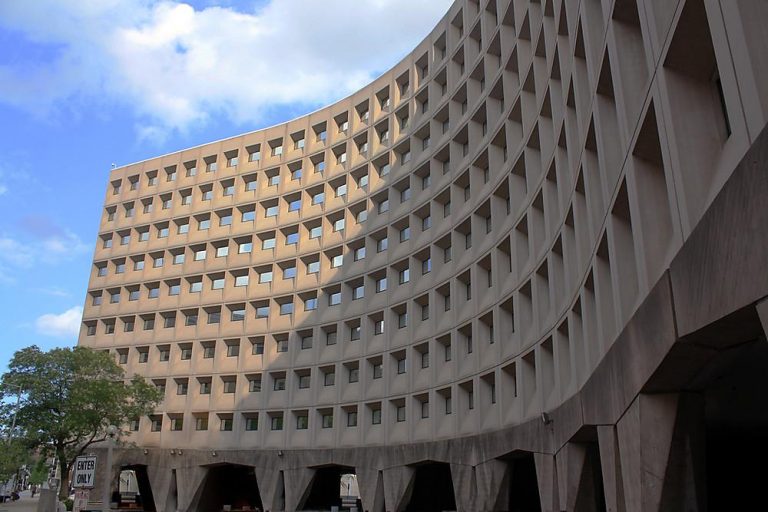The Displacement of Minority Households in Face of Redevelopment Projects
In the face of modernization, redevelopment practices can often lead to exclusionary rules, making affordable housing less available. The federal, state, and local governments need to address eminent domain and gentrification by measuring its impact on minorities’ access to resources such as housing and jobs.
Since World War II, the United States has seen exponential city growth. Neighborhoods once predominantly people of color (POC) have been subject to decades of discriminatory practices, forcing their people to relocate to impoverished, underdeveloped areas.
Land use restrictions such as zoning, development fees, growth regulations, and caps are often stringent against minority communities. Government entities and influential individuals can circumvent the very concept of the 1964 Civil Rights Act and allow unequal housing to benefit white, affluent neighborhoods. As a result, low-income communities are rapidly decreasing, making affordable housing harder to find.
What is Gentrification?
Gentrification is the placement of high-cost development in lower-income areas. As a result, the cost of living increases, forcing lower-income families to move out. A common outcome of gentrification is the displacing of minority low-income communities, which increases segregation. Examples of gentrification can be found in Detroit, Philadelphia, and areas of New York City.
What Are Its Effects on Minority Groups?
Governing Report analyzes the composition of gentrified and non-gentrified areas. The Report finds that gentrified areas see an increase in white non-Hispanics. Conversely, non-gentrified low-income areas see an increasing concentration of minority groups, with poverty rates increasing by 7% on average in all neighborhoods.
A Stanford University study found gentrification’s disproportionate effects on minority groups by comparing economically disadvantaged residents in predominantly Black neighborhoods to those in other areas.
The study finds that those moving from neighborhoods that are not predominantly Black have more housing options without falling victim to rent discrimination. On the other hand, residents in mostly Black areas are relocating to the few remaining affordable neighborhoods, often composed of African American and immigrant populations. This creates segregated neighborhoods with low mobility opportunities.
What is Eminent Domain?
Eminent domain is the acquisition of private property for public use. It helps advance gentrification by creating more modern development in once underdeveloped areas.
In the name of urban renewal and modernization, eminent domain is a commonly used tactic by governments that displaces minority communities. But according to the Fifth Amendment in the U.S. Constitution, individuals must not “be deprived of property without due process of the law,” and they must be “justly compensated at a fair market value.”
What Are Its Effects on Minority Groups?
Between 1949 and 1973, eminent domain displaced one million people. Two-thirds were African American, despite only comprising about 12% of the population at the time. They were five times more likely to be displaced than white people.
The term “urban blight” is commonly used to justify eminent domain. It describes acquiring private property that lacks essential functions such as structural safety, utilities, and an uncontaminated environment. For example, the Supreme Court decision Berman v Parker (1945) ruled that Washington DC could transfer a department store into a private entity to cure blight in the neighborhood. The decision had high implications on low-income black communities in the District of Columbia, displacing around 5,000 tenants.
The case not only expanded the meaning of “public use” to “public purpose” but also set a precedent allowing the use of more eminent domain against African Americans under the disguise of removing blight.
How Do Entities Circumvent Compensation Agreements?
In 2006, the U.S government intended to take over 360 properties in American neighborhoods bordering the Mexican border to allow for the creation of a barrier. The federal government issued waivers to provide compensation without properly appraising the properties.
In the Supreme Court case Kelo v. City of New London (2005), the ruling allowed eminent domain if the land would have a “higher use.” The decision forces tenants to accept compensation agreements under these parameters.
The decision’s long-term implication is that it can quickly expand eminent domain in areas with low property value by claiming the land will be put to higher use. Areas with low property value are often low-income minority areas, where the condemning authority can give lower compensation. The resident would unlikely contest the agreement, given their lack of influence and monetary resources needed to seek litigation. Because the compensation is so low, displaced individuals are forced to move to highly segregated and impoverished areas.
What is the Right Approach to Solving this Issue?
Cities should aim to desegregate and champion diversity by not increasing property taxes for those living in gentrified areas and through mixed-income communities. The local entity should allocate resources for subsidized projects for low-income minority communities and increase school busing options to make schools more diverse. The governments should work with their citizens and increase public participation.
It is essential to consider racial prejudices that exacerbate segregation. Addressing racism at the educational level, where children of all backgrounds can see more inclusivity in urban and more affluent neighborhoods, normalizes integration. Governments must address redevelopment from the perspective of giving back to all taxpayers. Instead of benefitting one sliver of the population, the projects must have widespread benefits that make it possible for current residents to remain in the area.





